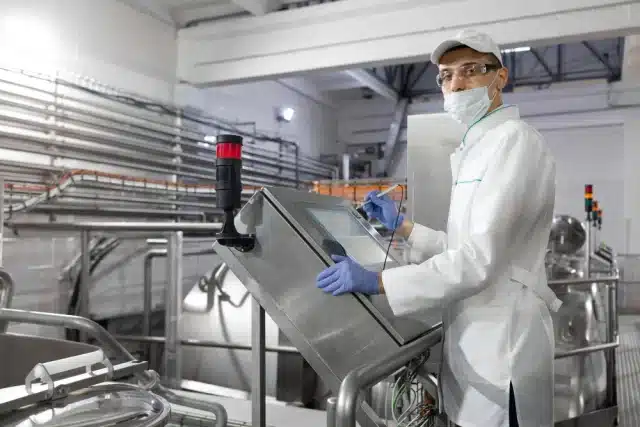Food processing facilities are under a great deal of pressure to meet the demands of their clients as well as the general public. There’s a growing call for processed, prepackaged foods, and it’s only going to gain momentum moving forward. At the same time, the public’s expectations of those products are constantly changing, and new safety and quality regulations are continually coming into play.
In light of those factors and many others, food processing facilities are making greater efforts to streamline their processes and strive for maximum efficiency. Several strategies can help them do just that. Some may need a volumetric filling machine and other updated equipment to help them increase efficiency while others may fare better by revamping their entire approach to production and storage. Consider some of the most effective ways to optimize food processing operations for higher production rates, improved quality, reduced costs, and other benefits.
Lean Manufacturing
Many food processing facilities are implementing lean manufacturing processes to maximize their efficiency. Those focus on improving productivity and minimizing waste. Numerous strategies fall into this category alone. Value stream mapping is one of them. It entails analyzing a company’s processes to pinpoint and eliminate non-essential steps and other problems.
Many companies are leaning toward just-in-time production as well. That involves creating products only when they’re needed rather than building their inventories beyond actual demand and keeping exorbitant amounts of products in warehouses. That can reduce warehousing costs and waste. Those are only a couple of the lean manufacturing processes that are enabling companies to improve their efficiency.
Improving Facility Layouts
Improving the layout of a facility can also lead to significant efficiency increases. After all, the way a facility is set up can have a considerable impact on its organization and workflow. Depending on a company’s production techniques, either a process- or product-oriented layout may be more effective. In a product-oriented layout, equipment is arranged based on steps in the production process. With a process-oriented layout, equipment that carries out specific processes is grouped together to help keep products flowing smoothly.
For some facilities, U-shaped production areas work best. They minimize the distances between different machinery or steps in the production process. Other times, an L-shaped design is more efficient. It leaves ample open space for bringing in materials, taking away finished products, and workers to move around more freely. In certain instances, a flexible layout may work well. This allows companies to quickly and easily change the layout of their machinery for different production runs.
Monitoring and Analytics
Ongoing monitoring and using analytics can also contribute to efficiency. Like so many elements of the manufacturing industry, improving efficiency isn’t a one-time process. It’s an ongoing effort that tends to evolve as new techniques, technology, consumer demands, and additional factors enter the mix. Constant monitoring, improving upon production processes, and taking advantage of new developments are essential. At this point, software is available to cover much of that process for its users. It tracks key performance indicators and other details to continually help companies improve their efficiency, reduce costs, bolster quality, and make other positive changes.
Ramping Up Efficiency in Food Processing
Maximizing efficiency is crucial for food processing facilities. It’s the key to meeting production demands, reducing waste, minimizing expenses, and providing the level of quality clients expect. From updating equipment and improving the layouts of work areas to incorporating more effective production strategies and beyond, food production companies can take an array of steps to streamline their operations for improved efficiency.





